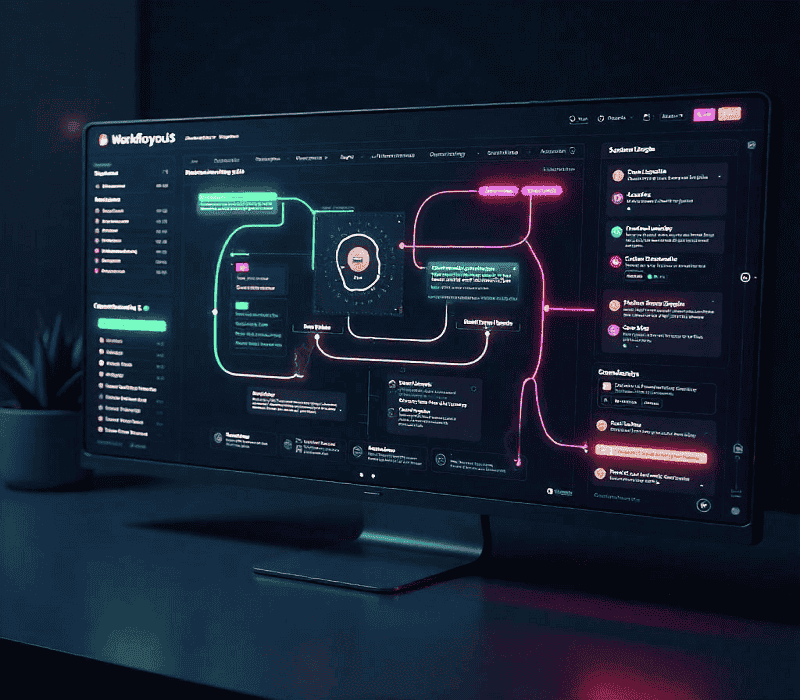
ComfyUI is a powerful and flexible user interface framework designed to streamline the creation and management of workflows in various applications, particularly in the realm of automation, data processing, and user interaction. This article delves into the intricacies of ComfyUI workflows, covering every aspect from basic concepts to advanced techniques.
1. Introduction to ComfyUI
ComfyUI is a user interface framework that simplifies the creation of complex workflows. It is designed to be intuitive, allowing users to build, manage, and optimize workflows with minimal effort. ComfyUI is particularly useful in environments where automation, data processing, and user interaction are critical.
Key Features of ComfyUI
- Drag-and-Drop Interface: ComfyUI offers a drag-and-drop interface that makes it easy to design workflows without writing code.
- Modular Design: Workflows are built using modular components, which can be easily added, removed, or modified.
- Extensibility: ComfyUI supports plugins and extensions, allowing users to add custom functionality.
- Cross-Platform Compatibility: ComfyUI is designed to work across different platforms, ensuring flexibility and scalability.
2. Understanding Workflows
A workflow is a sequence of tasks or processes that are executed in a specific order to achieve a desired outcome. In the context of ComfyUI, workflows are visual representations of these sequences, allowing users to design, execute, and monitor processes efficiently.
Types of Workflows
- Linear Workflows: These are straightforward sequences where each task follows the previous one without any branching.
- Conditional Workflows: These involve decision points where the flow of tasks depends on certain conditions or criteria.
- Parallel Workflows: These allow multiple tasks to be executed simultaneously, improving efficiency and reducing processing time.
3. Components of ComfyUI Workflows
ComfyUI workflows are composed of several key components, each serving a specific purpose in the overall process.
Nodes
Nodes are the fundamental building blocks of ComfyUI workflows. Each node represents a specific task or operation. Nodes can be connected to form a sequence, with data flowing from one node to the next.
- Input Nodes: These nodes receive data or input from external sources.
- Processing Nodes: These nodes perform operations on the data, such as filtering, transformation, or analysis.
- Output Nodes: These nodes deliver the final output or result of the workflow.
Connections
Connections define the flow of data between nodes. They are represented by lines or arrows that link one node to another. Connections can be configured to pass specific types of data, ensuring that each node receives the appropriate input.
Parameters
Parameters are settings or configurations that control the behavior of nodes. They can be adjusted to customize the operation of each node, allowing for greater flexibility and precision in workflow design.
Triggers
Triggers are events or conditions that initiate the execution of a workflow. They can be time-based, data-driven, or user-initiated, depending on the requirements of the workflow.
4. Designing Workflows in ComfyUI
Designing workflows in ComfyUI involves several steps, from conceptualization to execution. Here’s a detailed guide to creating effective workflows.
Step 1: Define the Objective
Before designing a workflow, it’s essential to clearly define the objective. What is the desired outcome? What tasks or processes are required to achieve this outcome? Answering these questions will help in creating a focused and efficient workflow.
Step 2: Identify the Components
Once the objective is clear, identify the components (nodes) needed to achieve it. Determine the input sources, processing steps, and output destinations. Consider any conditions or decision points that may be required.
Step 3: Arrange the Nodes
Using the drag-and-drop interface, arrange the nodes in the desired sequence. Connect them using the appropriate connections, ensuring that data flows correctly from one node to the next.
Step 4: Configure Parameters
Adjust the parameters of each node to customize their behavior. This may involve setting thresholds, defining data formats, or specifying processing rules.
Step 5: Set Triggers
Define the triggers that will initiate the workflow. This could be a specific time, the arrival of new data, or a user action.
Step 6: Test the Workflow
Before deploying the workflow, test it to ensure that it functions as expected. Check for any errors or inefficiencies and make necessary adjustments.
Step 7: Deploy and Monitor
Once the workflow is tested and optimized, deploy it for regular use. Monitor its performance and make adjustments as needed to maintain efficiency and accuracy.
5. Advanced Workflow Techniques
For users looking to take their ComfyUI workflows to the next level, there are several advanced techniques that can be employed.
Conditional Logic
Incorporate conditional logic to create workflows that adapt to different scenarios. This involves using decision nodes that evaluate conditions and direct the flow of data accordingly.
Parallel Processing
Leverage parallel processing to execute multiple tasks simultaneously. This can significantly reduce processing time, especially in workflows that involve large datasets or complex computations.
Error Handling
Implement error handling mechanisms to manage exceptions and ensure that workflows continue to run smoothly even when unexpected issues arise. This may involve setting up fallback nodes or retry mechanisms.
Data Transformation
Use data transformation nodes to manipulate and reformat data as it flows through the workflow. This can include tasks such as data cleansing, aggregation, or conversion.
Integration with External Systems
ComfyUI workflows can be integrated with external systems and APIs to extend their functionality. This allows for seamless data exchange and interaction with other applications.
6. Best Practices for ComfyUI Workflows
To ensure that your ComfyUI workflows are efficient, reliable, and maintainable, consider the following best practices.
Keep Workflows Simple
Avoid overcomplicating workflows with unnecessary nodes or connections. Keep them as simple as possible while still achieving the desired outcome.
Use Descriptive Names
Give nodes and connections descriptive names that clearly indicate their purpose. This makes it easier to understand and manage the workflow, especially when revisiting it after some time.
Document Your Workflows
Document the design and functionality of your workflows. This can include comments within the workflow itself or external documentation that explains the purpose and operation of each component.
Regularly Review and Optimize
Periodically review your workflows to identify areas for improvement. Look for opportunities to optimize performance, reduce complexity, or enhance functionality.
Test Thoroughly
Always test your workflows thoroughly before deploying them. This includes testing for different scenarios, edge cases, and potential errors.
Stay Updated
Keep up with the latest updates and features of ComfyUI. New versions may introduce improvements or new functionalities that can enhance your workflows.
7. Conclusion
ComfyUI workflows offer a powerful and flexible way to design, manage, and optimize complex processes. By understanding the key components and following best practices, you can create efficient and reliable workflows that meet your specific needs. Whether you’re automating data processing, managing user interactions, or integrating with external systems, ComfyUI provides the tools and features necessary to achieve your objectives.
With its intuitive interface, modular design, and extensibility, ComfyUI is an invaluable tool for anyone looking to streamline their workflows and improve productivity. By mastering the techniques and strategies outlined in this article, you can unlock the full potential of ComfyUI and take your workflows to the next level.
for read more articles, visit our website : https://topmate.blog/







This guide really highlights how important it is to focus on simplicity in workflow design. Too often, people overcomplicate things, so the reminder to keep things streamlined and well-documented is super helpful.